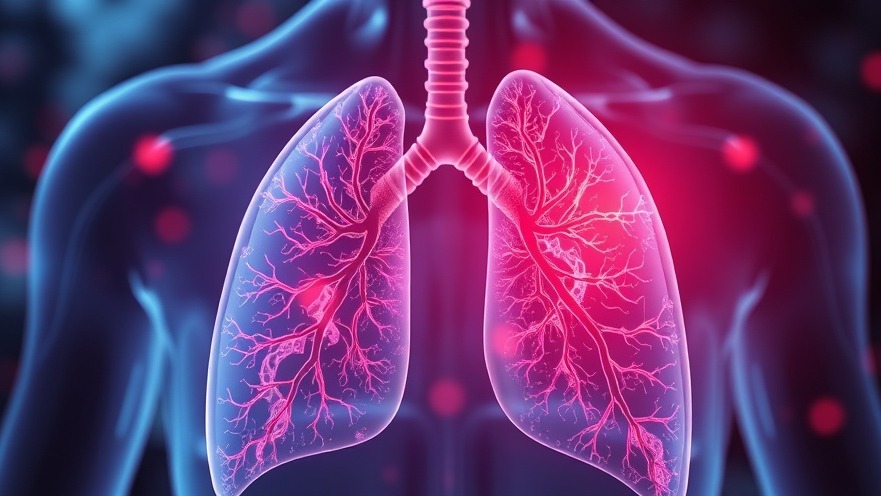
Breakthrough in Gene Therapy Delivery: The AAV.CPP.16
In a significant advancement in the field of gene therapy, researchers at Mass General Brigham have developed a novel adeno-associated virus variant, labeled AAV.CPP.16, capable of delivering therapeutic molecules through a nasal spray directly to the airway and lungs. This mode of delivery is not merely a methodological advancement; it represents a potential paradigm shift in how respiratory diseases and viral infections can be treated.
The Veracity of Intranasal Gene Delivery
The key to effective gene therapy lies in the precise delivery of therapeutic agents. Traditional methods have relied on various vectors, with adeno-associated viruses being a prominent choice due to their ability to target specific cells. However, previous generations of AAVs, such as AAV6 and AAV9, have limitations in efficiently targeting lung tissue. AAV.CPP.16 addresses these deficiencies, showcasing a remarkable ability to infiltrate lung cells in preclinical models.
Dr. FengFeng Bei, the lead researcher, noted that the initial intention for AAV.CPP.16 was to enhance delivery to the central nervous system. This unexpected efficacy in targeting lung cells spurred more in-depth investigations, leading to promising findings that could revolutionize respiratory treatments.
Clinical Implications: Targeting Pulmonary Fibrosis and COVID-19
The implications of AAV.CPP.16 stretch far beyond just theoretical advancements. In practical applications, the researchers successfully utilized this delivery system for gene therapy aimed at treating pulmonary fibrosis, a condition characterized by lung scarring that significantly impairs respiratory function. By demonstrating its effectiveness in mouse models, the study opens doors for potential human applications in treating this challenging condition.
Furthermore, the researchers explored its application in combating viral infections, utilizing the therapy to inhibit the replication of the SARS-CoV-2 virus, the pathogen responsible for COVID-19. The ability to effectively target respiratory diseases combines innovative therapy with urgent public health relevance, especially in the context of ongoing battles against respiratory viruses.
Future Perspectives: A New Era of Respiratory Treatments
As medicine transitions into a more personalized approach, knowing about and understanding tools like AAV.CPP.16 will be crucial for concierge health practitioners. The potential for this advanced gene therapy to provide targeted treatment solutions underscores an important shift that may redefine standard care protocols for respiratory illnesses.
Continued research into AAV.CPP.16 is paramount, but the current results speak volumes about its translational potential. The intranasal administration route presents not just convenience for patients, but also a platform for more localized and effective treatments.
Actionable Insights for Health Practitioners
For health practitioners, staying abreast of these advancements is not merely beneficial, it is essential. Here are several key takeaways to consider:
Engage with Emerging Therapies: Understanding new therapeutics like AAV.CPP.16 can enhance patient care by enabling practitioners to discuss innovative options with patients.
Educate Your Patients: As gene therapy evolves, educating patients on its benefits and potential risks will play a pivotal role in their treatment journey.
Monitor Ongoing Research: Keeping an eye on ongoing studies into AAV.CPP.16 and its applications could provide foresight into upcoming treatment opportunities and challenges.
Final Thoughts: An Encouraging Note
The development of AAV.CPP.16 represents an exciting leap forward in respiratory gene therapy. Its success in successfully targeting lung cells and treating conditions such as pulmonary fibrosis and viral infections like COVID-19 emphasizes the urgent need for continued innovation in the field. For concierge health practitioners, it opens up a conversation about the future of patient care and the importance of integrating emerging technologies into practice.
As we stand on the brink of what may very well be a new era in personalized medicine, it is critical to stay informed about these developments and understand their implications on patient outcomes. By leveraging these advancements, practitioners can better navigate the complexities of treating respiratory diseases in their patient populations.
Stay connected and informed about the latest in gene therapy and continue to explore opportunities that can enhance patient care and outcomes.
 Add Row
Add Row  Add
Add 




Write A Comment